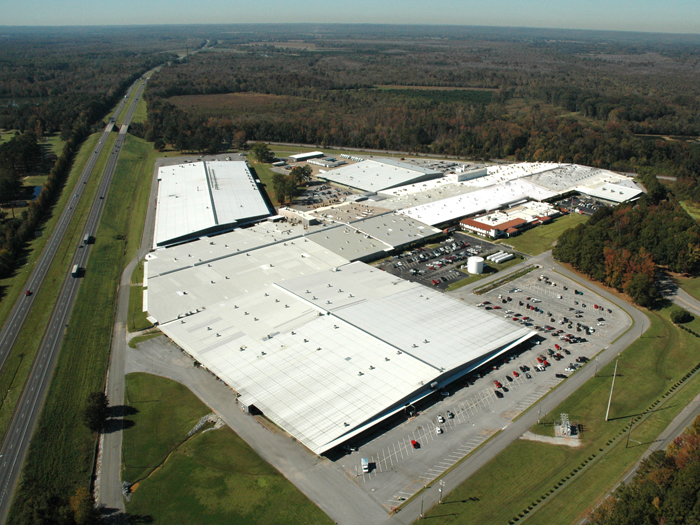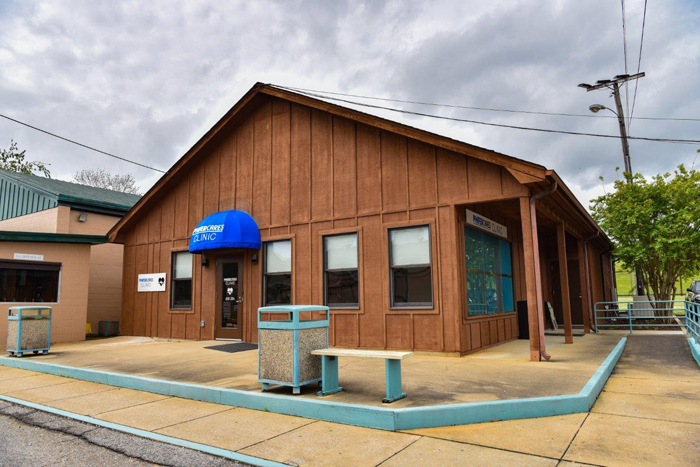How Phifer Took Control of Its Workers’ Comp Program

Call it a case of a window and awning part manufacturer putting its injured worker exposures in the shade.
Phifer, based in Tuscaloosa, Ala., manufactures wire mesh for insect screens used in doors, windows and patio shelters. It also makes sun-shade and furniture fabrics, aluminum wire and wire mesh for other uses. Total employment is about 1,250.
For 25 years, the workers’ compensation program at Phifer was self-insured and self-administered. The work it did in recent years to keep workers safer and get them back to work sooner earned the company a Teddy Award Program of Distinction for 2021.
Here’s their story.
A Time to Change
As a result of changes in the workers’ compensation statutes and case law in Alabama, as well acquisitions by the company, Phifer shifted to a large-deductible insurance policy with a third-party administrator in 2013.
“Our program traipsed along by meeting transactional requirements,” said Russell DuBose, vice president of human resources, “but it was only average at best, because it lacked innovation.”
In the spring of 2019, when the workers’ compensation metrics were presented to the senior leaders of the business, “it became apparent that our trend lines were heading in the wrong direction,” DuBose said.
“We were creating risk for the business and not fulfilling our commitment to be the best that we could be in service to our employees. We did not have a strategic plan, identified resources or organizational design to create conditions for a high performing plan or program success.”
Well-Laid Plans in Action
Company executives determined that “creating a positive end-to-end experience for the injured worker” would be its top priority. The company also decided that a portion of any savings generated from the improved workers’ comp process would be reinvested in the program.
“Our operation design consisted of four primary lines of effort,” said DuBose.
“They are: organizational structure, injured worker navigation, wrap-around services, and highly accessible and quality medical care.” The new structure was put in place in 2020 “and even with the COVID-19 pandemic as a barrier, we achieved incredible results,” he added.
As a case in point, late that year, a long-term employee who had a previous workplace injury was having issues performing his job duties.
An appointment with the employee’s physician was arranged. The nurse case manager attended the appointment and discussed the findings and treatment plan with the physician and worker to ensure that all critical points were well communicated and understood by the worker.
Phifer also arranged for ergonomic engineers at the Alabama Department of Rehabilitative Services to evaluate the employee’s work station and duties. The engineers advised the company as to what accommodations were required to create an optimum work environment.
While those accommodations were made, the company started the employee in its series of three return-to-work programs. Those beginning with away-from-work light duty, then out-of-department light duty, and finally in-department light duty.
“Over the course of two months, we brought all of new tools and services to bear and had a positive outcome for a complex workers’ compensation case,” said DuBose. “The worker is now in a role in which he is happy, successful and contributing to the business.”
Tonia Jones, health care and workers’ compensation specialist at Phifer, said, “Every case is different, and we take each one as it is. I make contact with the employee as soon as I can [after an injury], to help lead them along the recovery process that involves many steps working with doctors, nurses and case managers. Sometimes just talking with people, letting them know someone knows and cares what they are going through, is a big help.”
Bringing It In-House
While Phifer went to the market after being self-insured for decades, it has moved in the other direction for the actual care.
Under the Employment Compact in Alabama, the employer gets to select the treating physician. After working with outside vendors for many years, Phifer decided four years ago to create an in-house clinic and physical therapy center.
“Tonia is the leader of the medical and physical therapy teams,” said DuBose.
“She also leads the effort to re-evaluate every job before an employee goes back to work, to determine if there is anything about the job that can be made safer. We don’t just want to reduce the time away from work, we also want to reduce the possibility of any similar injury.”
The decision to bring care and rehabilitation in-house was based on improving the entire process, not just on cost or speed of recovery.
“Based on our long-standing relationships with providers in the area,” DuBose said, “we determined that the better outcomes resulted from their in-depth knowledge of our workers and our company. When we aggregated the value to the company of having that in-depth knowledge in-house, the dollars fell into line. Building and staffing our own operation has proven more cost effective [than relying on outside providers], especially during the pandemic.”
Beyond the essential role in helping injured workers heal and return to the job, the in-house facilities “have primary roles for interceding against injury and illness at all of our operations,” said DuBose. “They establish the best return-to-work and also root causes of injury and the best ways to prevent accidents.”
One important component of that is post-offer employment testing, or POET. Before a new worker starts the job, the employee comes into the clinic in order for that person and the staff to get to know each other.
“It’s good for the employees and it’s good for the company,” said DuBose. The new workers get to know the resources available, and the staff get to know the needs and concerns of the worker.
“Our shining star in providing accessible and high-quality health care services is our very own onsite health care clinic,” said DuBose.
Onsite Attendance
The PhiferCares Clinic (PCC) provides primary, urgent and occupational health care, including in-house lab collection and pharmacy. It is a hybrid model in which the company owns the clinic but has a contract with the local hospital to provide the clinic staff.
That staff comprises two medical doctors, a nurse practitioner, four registered nurses and a medical data specialist. The clinic is connected and integrated for specialty referrals such as orthopedics.
“The PCC has exceeded our expectations as defined by patient satisfaction, patient utilization, return-to-work, accessibility and cost,” said DuBose.
Beyond the primary care clinic, Phifer has also created an onsite physical therapy and injury prevention program. The onsite provider, DCH-Encore Rehabilitation, is next door to the primary care clinic.

Exterior shot of the on-site PhiferCares Clinic.
“When the physical therapists are not providing clinical physical therapy they are on the plant floor, engaging with employees; watching for proper ergonomics; and building relationships,” said DuBose.
The physical therapists also conduct physical POETs for all new hires and job transfers. Our ability to assess provides our workers a realistic expectation of the work duties and baseline. This is an example that an ounce of prevention is worth a pound of cure.”
Following a Tried-and-True Comp Philosophy
DuBose explained that Phifer uses the Lean Six Sigma management philosophy.
“Over time we were able to remove the noise and get to the signal,” said DuBose, “so we learned to let the data tell the story. We were able to have confidence in the data, to trust the data, and that enabled us to be brave in making decisions.”
Overall, DuBose said, “We have achieved a 180-degree turn in our workers’ compensation program,” he said.
“Even though 2020 and ’21 were challenging years, we never closed our doors. We worked hard and spent our resources wisely to create a high-performing workers’ compensation program. The program has saved the company a significant amount of money, which we have reinvested into the program to the benefit of our employees.” &












